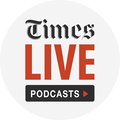
One size does not fit all in Africa’s Covid-19 response
Loading player...
The right to life is fundamental; an imprescriptible right inherent to all human beings. The Equity and Human Rights Commission states that governments should take appropriate measures to safeguard life by “taking steps to protect you if your life is at risk”.
With public healthcare in Africa suffering chronic shortages of critical drugs, medical brain-drain, insufficient public healthcare funding as well as inadequate pharmaceutical production, are African governments taking appropriate measures to safeguard citizens’ lives?
About 80% of Africans in the middle-income bracket and below rely on public health facilities. Leading killers on the continent, often described as the “big three” include malaria, tuberculosis and HIV/Aids. It is important to note the transition over recent years to lifestyle diseases like obesity and diabetes. About 50% of under-five deaths in Africa are caused by pneumonia, diarrhoea, measles, HIV, tuberculosis and malaria.
According to the International Finance Corporation, healthcare in Sub-Saharan Africa exhibits the worst performance in the world, with few countries able to spend the $34 to $40 a year per person that the World Health Organisation (WHO) considers the minimum for basic healthcare. Africa’s capacity for pharmaceutical research and development, as well as local drug production, still has a long way to go. Fewer than 40 out of 54 African states have some level of pharmaceutical production.
Most African countries rely on imported pharmaceutical ingredients. The implication may be that citizens will not have access to affordable locally manufactured medicines as prohibitively expensive imports dominate the markets. Another implication is that the shortages of medicines in some public healthcare facilities like local clinics mean that they will often refer sick patients to larger hospitals for basic medicine. This creates a bottleneck at these larger facilities and diverts resources away from their core focus, the very opposite of what should be happening in system-governance terms.
Beyond the medicine shortages and bottleneck problems, several other factors inhibit access to healthcare, one of which is access to skilled personnel. A brain-drain of home-grown doctors migrating abroad amplifies the pre-existing challenges. Another factor is the sheer underallocation of resources towards healthcare. Current health expenditure as a percentage of GDP for Sub-Saharan Africa sits at 5.2% compared with a global average of 9.9%. Compounding the situation, corruption often diverts the little that is allocated away from where it is needed most.
The WHO defines having access to health as having medicines continuously available and affordable ...
With public healthcare in Africa suffering chronic shortages of critical drugs, medical brain-drain, insufficient public healthcare funding as well as inadequate pharmaceutical production, are African governments taking appropriate measures to safeguard citizens’ lives?
About 80% of Africans in the middle-income bracket and below rely on public health facilities. Leading killers on the continent, often described as the “big three” include malaria, tuberculosis and HIV/Aids. It is important to note the transition over recent years to lifestyle diseases like obesity and diabetes. About 50% of under-five deaths in Africa are caused by pneumonia, diarrhoea, measles, HIV, tuberculosis and malaria.
According to the International Finance Corporation, healthcare in Sub-Saharan Africa exhibits the worst performance in the world, with few countries able to spend the $34 to $40 a year per person that the World Health Organisation (WHO) considers the minimum for basic healthcare. Africa’s capacity for pharmaceutical research and development, as well as local drug production, still has a long way to go. Fewer than 40 out of 54 African states have some level of pharmaceutical production.
Most African countries rely on imported pharmaceutical ingredients. The implication may be that citizens will not have access to affordable locally manufactured medicines as prohibitively expensive imports dominate the markets. Another implication is that the shortages of medicines in some public healthcare facilities like local clinics mean that they will often refer sick patients to larger hospitals for basic medicine. This creates a bottleneck at these larger facilities and diverts resources away from their core focus, the very opposite of what should be happening in system-governance terms.
Beyond the medicine shortages and bottleneck problems, several other factors inhibit access to healthcare, one of which is access to skilled personnel. A brain-drain of home-grown doctors migrating abroad amplifies the pre-existing challenges. Another factor is the sheer underallocation of resources towards healthcare. Current health expenditure as a percentage of GDP for Sub-Saharan Africa sits at 5.2% compared with a global average of 9.9%. Compounding the situation, corruption often diverts the little that is allocated away from where it is needed most.
The WHO defines having access to health as having medicines continuously available and affordable ...

